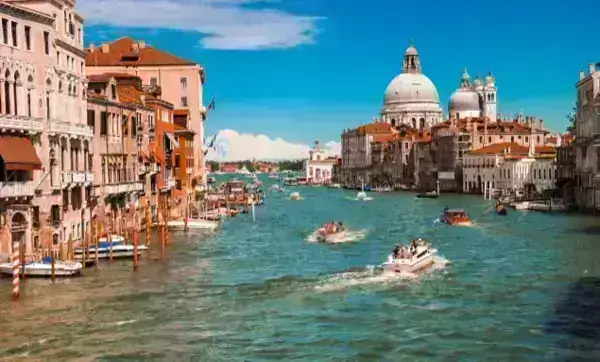Italy, a country celebrated for its historical depth and cultural richness, harbors a treasure trove of ancient rituals that have withstood the test of time. Among these, the ritual of Casteò shines brightly, embodying a unique blend of tradition, spirituality, and communal unity. This article delves into the origins of Casteò, its evolution through history, and its enduring significance in Italian culture.
Origins of Casteò: Tracing Back Centuries
The roots of Casteò can be traced back to the agricultural societies of ancient Italy, where communities relied heavily on the fertility of the land for sustenance and survival. Scholars believe that it likely originated as a series of pre-Christian rituals aimed at appeasing agricultural deities and ensuring prosperous harvests. These early rites were deeply intertwined with seasonal cycles and the rhythms of nature, reflecting a profound reverence for the earth and its bounty.
Historical Context
As Italy evolved over the centuries, so too did the ritual of it. Initially practiced in rural villages as a means of ensuring fertility and abundance, it gradually assimilated elements from various cultural influences, including Roman, Christian, and pagan traditions. The rituals associated with it evolved into complex ceremonies overseen by designated spiritual leaders, symbolizing the cultural amalgamation that defines Italy’s rich heritage.
Ritualistic Practices: Sacred Traditions of Casteò
Central to the ritual of its elaborate ceremonial practices, which vary regionally but share common themes of reverence and communal participation. Typically held at pivotal points in the agricultural calendar, such as planting or harvest seasons, it ceremonies commence with invocations to spiritual entities believed to govern fertility and prosperity. Participants, clad in traditional attire, engage in symbolic gestures such as processionals, offerings of food and wine, and intricate dances that echo ancient rhythms.
Symbolism and Meaning
At its core, Casteo symbolizes a profound relationship between humanity and the natural world. The rituals performed during they are imbued with symbolic meaning, each gesture and offering carrying layers of spiritual significance. For instance, the arrangement of stones or the use of specific herbs may symbolize fertility, protection from adversity, or gratitude for abundant harvests. Through these rituals, participants express their interconnectedness with nature and their community, reinforcing bonds of solidarity and shared cultural identity.
Casteò as a Social Cohesion Tool
Beyond its spiritual dimensions, it plays a crucial role in fostering social cohesion within communities. The ritual serves as a unifying force, bringing together individuals of diverse backgrounds and ages in a collective celebration. Participants not only reaffirm their cultural heritage through shared rituals but also strengthen bonds that transcend familial and societal divisions. In this way, it continues to nurture a sense of belonging and collective responsibility among its participants.
Modern Adaptations in Contemporary Italy
In contemporary Italy, the practice of it has adapted to meet the evolving needs and sensibilities of modern society. While some communities adhere strictly to traditional rituals, others have integrated Casteo into secular festivals or cultural events, ensuring its continuity and relevance in a rapidly changing world. These adaptations reflect Italy’s commitment to preserving its cultural heritage while embracing innovation and inclusivity.
Challenges and Preservation Efforts: Safeguarding Italy’s Intangible Heritage
Despite its enduring popularity, Casteo faces challenges in the modern era, including urbanization, demographic shifts, and changing religious beliefs. Organizations dedicated to cultural preservation play a pivotal role in documenting and safeguarding the rituals associated with it. By advocating for its recognition as a vital component of Italy’s intangible heritage, these organizations ensure that future generations can experience and appreciate this ancient tradition.
Cultural Impact: Casteò’s Influence Beyond Italy
Beyond Italy’s borders, it has captivated scholars, artists, and enthusiasts worldwide, drawn to its mystical allure and cultural significance. Academic studies, artistic interpretations, and cultural exchanges have contributed to a deeper understanding of its role in shaping Italy’s cultural landscape and its resonance in global discussions on intangible heritage. it serves as a testament to the universal human experience of reverence for nature, community, and the enduring power of tradition.
Celebrating Diversity: Regional Variations
One of the most captivating aspects of it lies in its regional diversity within Italy itself. Different provinces and communities have developed unique variations of the ritual, influenced by local myths, dialects, and customs. These regional nuances highlight its dynamic nature and underscore its status as a living tradition that evolves with each community’s distinct cultural identity. Whether celebrated with solemnity or exuberance, it reflects the vibrant tapestry of Italy’s cultural mosaic.
The Future of Casteò
Looking ahead, the future of Casteò depends on collective efforts to preserve and promote this ancient ritual. By embracing innovation while honoring tradition, advocates of it seek to ensure its continued relevance and vitality for generations to come. Through educational initiatives, cultural exchanges, and community engagement, Italy aims to safeguard it as a source of inspiration and unity, enriching the lives of all who encounter it.
Conclusion
In conclusion, the ritual of Casteò stands as a testament to Italy’s rich cultural heritage, embodying centuries-old traditions that resonate deeply within its communities. From its humble beginnings in ancient agrarian societies to its contemporary adaptations, it remains a symbol of spiritual connection, communal harmony, and cultural resilience. As Italy navigates the complexities of the 21st century, the preservation of Casteo not only honors the past but also enriches the future, ensuring that this timeless ritual continues to inspire and unite.
Through Casteò, Italy invites the world to appreciate the beauty of its intangible heritage—a heritage that transcends borders and speaks to the universal human experience of reverence for nature, community, and the enduring power of tradition. As we celebrate Casteo’s legacy, we recognize its role in shaping Italy’s cultural identity and its profound impact on global conversations about heritage and cultural preservation. May it continue to illuminate our understanding of the past and inspire our aspirations for the future, bridging the divide between generations and cultures with its timeless message of unity and reverence.
